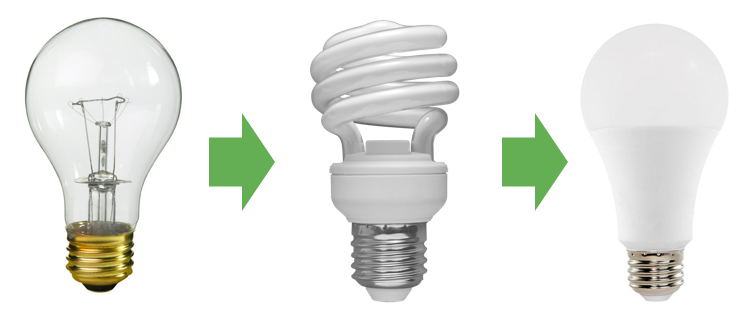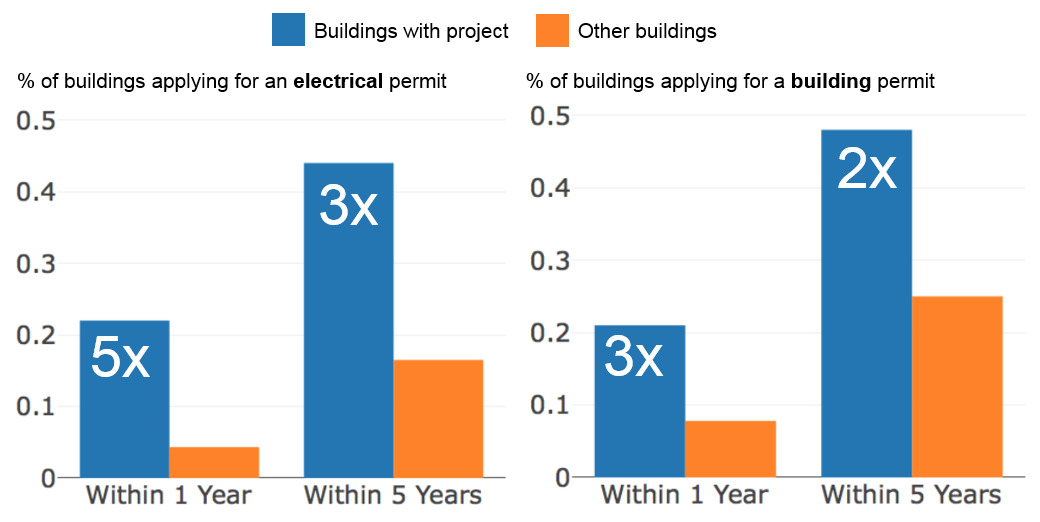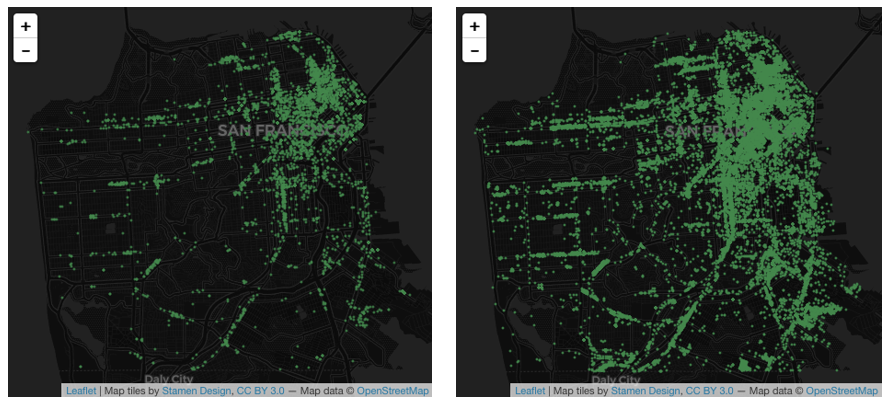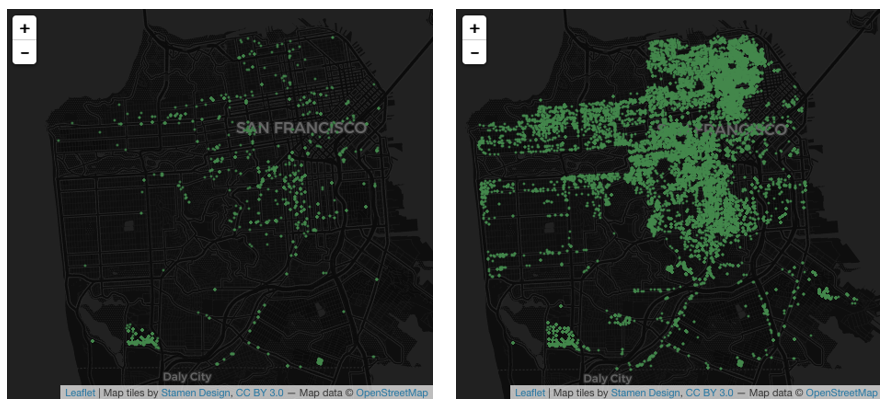REPORT
Greening the City with Better Lighting
When was the last time you decided to upgrade your light bulbs? If you’re like many folks, you wait until a light bulb burns out. In your home or apartment, you might have at most 20-30 bulbs.
But if you own a commercial property or lease a commercial space, your strategy might be a bit different. If you have 100s or 1000s of lightbulbs, there is tremendous cost savings potential from migrating from wholesale to light bulbs using newer more energy efficient technology.
For the first 100 years of electrical lighting, the incandescent bulb reigned supreme. While it provided needed light, it burns a lot of energy and releases excessive heat. In fact, the California Energy Commission officially prohibited the sale of incandescent bulbs in our State in January 2018.
Designed to consume less energy, lighting technology progressed with the mass-market introduction of compact fluorescent lamps in 1995. However, as soon as they had their heyday, Light Emitting Diodes or LEDs came on the scene.

Light technology has evolved over time - from incandescent to compact fluorescents to LEDs.
With each advancement in improved lighting technology, the City and County of San Francisco (City) wants to do all it can to encourage lighting upgrades, Commercial property and business owners are great lighting upgrade candidates, and the City is available to provide technical assistance and incentives to help with project implementation and upfront costs.
Background: The City offers help to make energy upgrades simple
While a lighting upgrade of 100s or 1000s of bulbs may make financial sense for a property or business owner, it still requires upfront dollars. That upfront cost is often a barrier. This is why the City’s Department of Environment (SFE) offers incentives to property owners and businesses to help encourage them to make the switch to the most efficient bulbs in the market that also fit the needs of building occupants.
Since 2006, the San Francisco Energy Watch program implemented by San Francisco Environment (SFE) has assisted local businesses and multifamily building managers or owners lower their energy bill through energy efficiency assessments and financial incentives, while also reducing San Francisco’s impact on the environment.
These energy incentives are part of the City’s wider goal to significantly reduce energy consumption through energy efficiency upgrades by 20301, and ensure that 100% of the electricity supplied by the grid to San Francisco residents and businesses is renewable by 2030. Together these steps will help the City significantly reduce greenhouse gas emissions by 2050. With targets this high - every lightbulb helps.
Service Question: SFE had helped most of their clients - could they find new leads?
SFE staffers had a challenge: they had helped most of the clients in their database and suspected there may be additional properties that could benefit from the program.
However, SFE first needed to know if they had saturated the market and if not, how best to generate new leads. SFE also wanted to understand if additional upgrade potential existed within their existing list of clients for different energy efficiency measure incentives.

The number of projects and resulting energy savings from Energy Watch has been declining in recent years.
Analytics: Building permits can help identify new clients
DataScienceSF explored what made for good candidates (leads) for lighting upgrades in the past. One key finding was that applicants for building permits where more likely to take advantage of energy efficiency incentives: Completed upgrades were nearly 2 times as likely to have applied for permits within prior 5 years and nearly 3 times as likely to have applied within 1 year.

Buildings that had completed projects with Energy Watch were more likely to have applied for a building or electrical permit, suggesting that other permit applicants may be good leads.
We also found that the majority of past projects focused on smaller buildings with smaller energy savings. Was there an opportunity for bigger energy savings?
Implementation: Enriched list of property leads feeds new client outreach strategy
Based on the findings, DataScienceSF created a long list of potential leads. We combined data on property use, permitting activity, and energy consumption to help prioritize targets. The new list relied heavily on data already published through the open data portal. We then matched it with properties in SFE’s existing database to easily identify properties that already existed in the database.
Before and after maps show increase in list of leads

DataScienceSF was able to increase Energy Watch's list of potential commercial leads by 250%.

DataScienceSF was able to increase Energy Watch's list of potential multifamily leads by 1000%.
Next steps
This project prompted a couple of new ideas:
- Combine this data with building energy consumption data from PG&E to further refine and prioritize SFE’s outreach strategy. This approach allows SFE staff to target the high-energy users first and to identify specific building sectors with abundance of potential, and
- Continue updating the dataset, including new permit information, and integrating it into a custom dashboard so Energy Watch Staffers can see a summary of information quickly, and use it to conduct high-impact outreach.
Client Details:
Client Team
- Kathleen Bryan, Senior Energy Efficiency Specialist
- Lowell Chu, Senior Energy Efficiency Specialist
- Ben Cooper, Alameda County
- Imma Dela Cruz, Energy Efficiency Analyst
Testimonial
"As a cohort, I discovered that the DataSF Team’s expertise lies not only in working with binary numbers, but also in human connectedness. The Team took the time to connect with us by thoroughly learning its program, listening to the staff, fully understanding the issues, and most importantly, genuinely collaborating to yield the most appropriate set of solutions. DataSF Team’s ability to connect produced tangible, actionable solutions in an incredibly short amount of time.”
Lowell Chu, Senior Energy Efficiency Specialist, San Francisco Department of the Environment
*Image Credit: Header Image “Three energy saving light bulbs (original image cropped but unaltered otherwise)” by Anton Fomkin is licensed under CC BY 2.0